
Journal of Future Foods
Scope & Guideline
Innovating solutions for global food challenges.
Introduction
Aims and Scopes
- Food Quality and Preservation:
Research on methods to enhance the quality and extend the shelf life of food products, including postharvest treatments, packaging innovations, and preservation techniques. - Functional Foods and Nutraceuticals:
Investigation into foods that provide health benefits beyond basic nutrition, including studies on bioactive compounds, their mechanisms of action, and their role in disease prevention. - Food Safety and Technology:
Exploration of advanced technologies for food safety, such as detection methods for contaminants and the use of nanotechnology and molecular approaches to enhance food safety. - Sustainable Food Production:
Focus on sustainable practices in food production, including the use of alternative proteins, functional ingredients from plant sources, and the implications of food systems on health and the environment. - Cultural and Ethnobotanical Studies:
Examination of traditional and culturally significant foods, their nutritional value, and their potential applications in modern diets.
Trending and Emerging
- Plant-Based and Alternative Proteins:
An increasing focus on plant-based ingredients and alternative protein sources, reflecting consumer interest in sustainability and health, alongside research into their functional properties. - Bioactive Compounds and Health Benefits:
Heightened attention on the identification and application of bioactive compounds from various food sources, particularly in relation to their health-promoting effects and potential therapeutic uses. - Food-Tech Innovations:
Emerging research into food technology innovations, including nanotechnology, encapsulation methods, and novel processing techniques aimed at improving food safety and nutritional value. - Microbiome and Gut Health:
A growing trend in studies exploring the relationship between diet, gut microbiota, and overall health, emphasizing the implications for functional food development. - Sustainable and Ethical Food Systems:
An increasing number of publications addressing the sustainability of food systems, ethical considerations in food production, and the socio-economic impact of food choices.
Declining or Waning
- Traditional Food Preservation Techniques:
Research focused on conventional methods of food preservation has decreased, likely due to the rise of more advanced technologies and methods that promise better results. - Single Ingredient Studies:
Papers exclusively examining single food items or ingredients without broader implications for food systems or health benefits have become less common, reflecting a shift towards more integrative studies. - General Nutritional Studies:
While nutrition remains a key area, studies that do not incorporate innovative methodologies or novel food sources are becoming less frequent, as the journal emphasizes cutting-edge research.
Similar Journals
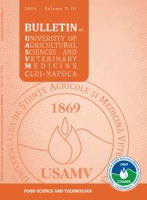
Bulletin of University of Agricultural Sciences and Veterinary Medicine Cluj-Napoca-Food Science and Technology
Transforming Research into Real-World Solutions in Food ScienceBulletin of University of Agricultural Sciences and Veterinary Medicine Cluj-Napoca - Food Science and Technology is a prominent peer-reviewed journal dedicated to advancing the field of food science and technology. Published by the University of Agricultural Sciences and Veterinary Medicine Cluj-Napoca, this open-access journal has been serving the academic community since 2013, promoting the dissemination of high-quality research that addresses pressing issues in food safety, quality, and innovation. With its ISSN 2344-2344 and E-ISSN 2344-5300, the journal aims to bridge the gap between academia and industry by providing a platform for scholars and practitioners to share their findings, insights, and methodologies. Situated in the heart of Romania, the journal reflects the country's rich agricultural heritage and its commitment to enhancing global food systems. By maintaining a rigorous editorial standard, the Bulletin ensures that it remains a vital resource for researchers, industry professionals, and students who are keen to explore the latest developments in food science.
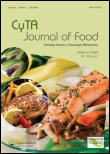
CyTA-Journal of Food
Empowering knowledge sharing in food science.CyTA-Journal of Food is a prestigious academic journal published by TAYLOR & FRANCIS LTD, dedicated to advancing the field of food science and technology through the dissemination of innovative research and practical knowledge. With an ISSN of 1947-6337 and an E-ISSN of 1947-6345, this journal stands out with its strong impact factor and is currently placed in the Q2 quartile across multiple categories, including Chemical Engineering, Chemistry, and Food Science, making it a vital resource for researchers and professionals alike. The journal has been an integral part of the academic community since its inception in 2009, and continues to publish cutting-edge articles through to 2024. Its alignment with Scopus ranks further signifies its influence, notably achieving 67th percentile in Industrial and Manufacturing Engineering. As an Open Access journal, it ensures widespread accessibility to its valuable content, promoting collaboration and knowledge sharing among scientists, engineers, and students dedicated to enhancing food safety, quality, and sustainability.
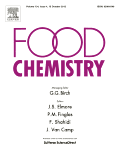
Food Chemistry
Pioneering Research in the Heart of Food ScienceFood Chemistry, published by Elsevier Science Ltd, is a leading international journal dedicated to the publication of high-quality research in the field of food chemistry. Established in 1976, this journal has made a significant impact in its realm, with an impressive 2023 impact factor and ranked Q1 in Analytical Chemistry, Food Science, and miscellaneous Medicine categories. It currently holds a remarkable Scopus ranking of #3 in Analytical Chemistry and #11 in Food Science, signifying its relevance and prestige among the top scholarly publications. With a wide scope that includes the chemistry of food composition, flavor, and safety, Food Chemistry serves as an essential resource for researchers, professionals, and students alike, offering insights and advancements in food analysis and technology. Access options may vary, and the journal is committed to disseminating innovative findings to foster knowledge and application in the dynamic field of food science.
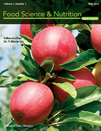
Food Science & Nutrition
Advancing knowledge in food science for a healthier tomorrow.Food Science & Nutrition is an esteemed peer-reviewed journal published by WILEY, dedicated to advancing the fields of food science and nutritional research. With an impressive impact factor and a prestigious Q1 ranking in the Food Science category, this journal stands out as a leading platform for innovative research, offering meaningful insights into the relationship between food composition and health outcomes. Since its transition to Open Access in 2013, Food Science & Nutrition has championed the global dissemination of knowledge, ensuring that vital research is accessible to researchers, professionals, and students alike. With a vast scope that encompasses both agricultural and biological sciences, the journal provides a comprehensive view of emerging trends, methodologies, and applications in food security and nutrition, making it indispensable for those invested in these critical areas.

npj Science of Food
Advancing Food Science for a Healthier Tomorrownpj Science of Food is a premier journal published by NATURE PORTFOLIO, focusing on groundbreaking research in the fields of Food Science and Public Health. Since its inception in 2017, this Open Access journal has rapidly established itself as a vital resource for researchers and professionals alike, contributing significantly to advancements in scientific knowledge related to food safety, sustainability, and nutritional health. With an impressive Q1 ranking in both Food Science and Public Health for 2023, and a Scopus ranking placing it in the top 12% of related fields, the journal serves as a critical platform for disseminating high-quality research. Situated in the United Kingdom and operating with a global perspective, npj Science of Food encourages the publication of innovative and interdisciplinary studies aimed at addressing real-world challenges in food systems and human well-being. Researchers, professionals, and students looking to stay at the forefront of food science can access a wealth of knowledge and insights through this impactful journal.

eFood
Transforming food systems with open-access knowledge.eFood is a pioneering journal in the field of food science, published by the esteemed WILEY. With its impactful emergence, the journal has rapidly established itself within the academic community, evidenced by its impressive Q1 category ranking in Food Science as of 2023, and a commendable position at Rank #95 out of 389 in the Scopus database. Covering a wide spectrum of topics related to food innovation, technology, safety, and nutrition, eFood serves as an indispensable platform for researchers, industry professionals, and students who are at the forefront of advancing our understanding of food systems. The journal notably operates with an open-access model, promoting wide dissemination of knowledge while enhancing the visibility of high-quality research. As we look forward to converging years from 2020 to 2024, eFood is poised to foster rigorous scientific discourse and contribute significantly to the future of food science research.

Food Chemistry: Molecular Sciences
Unraveling Molecular Mysteries in Food ChemistryFood Chemistry: Molecular Sciences is a leading academic journal published by ELSEVIER, dedicated to advancing knowledge in the fields of food science and molecular biology. With an ISSN of 2666-5662, this journal is a key platform for researchers and professionals aiming to disseminate innovative research findings from 2020 through 2024. Recognized for its quality, it stands in the Q1 category for Food Science and Q2 for Molecular Biology as of 2023, showcasing its commitment to high-impact publications. The journal is indexed in Scopus, earning ranks of #98/389 (74th percentile) in Agricultural and Biological Sciences - Food Science and #214/410 (47th percentile) in Biochemistry, Genetics and Molecular Biology - Molecular Biology. Each article represents cutting-edge research that drives the understanding and application of molecular principles in food chemistry, making it an essential resource for anyone involved in the field. Although this journal does not offer open access, its rigorous peer-review process ensures that the content is reliable and of significant academic value, contributing profoundly to the body of knowledge in the respective disciplines. Located in Amsterdam, Netherlands, Food Chemistry: Molecular Sciences continues to inspire scholarly discussion and innovation within the scientific community.
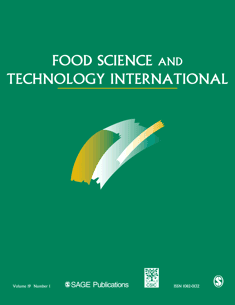
FOOD SCIENCE AND TECHNOLOGY INTERNATIONAL
Pioneering research for a sustainable food industry.FOOD SCIENCE AND TECHNOLOGY INTERNATIONAL, published by SAGE Publications Ltd, is a premier journal in the fields of food science and technology, serving as a crucial platform for the dissemination of innovative research and practical applications from 1995 through to 2024. With an impact factor reflecting its significant standing—ranking in the Q2 quartile for Chemical Engineering, Food Science, and Industrial and Manufacturing Engineering—this journal plays an instrumental role in advancing the interdisciplinary study of food systems. Researchers, professionals, and students can access high-quality contributions that address the latest developments and trends in food technology, safety, and processing. Located in the United States, FOOD SCIENCE AND TECHNOLOGY INTERNATIONAL also boasts commendable Scopus rankings, ensuring its articles are both relevant and widely cited within the academic community. As a vital resource for anyone engaged in food science research, этот журнал fosters knowledge sharing and innovation in the ever-evolving landscape of food technology.
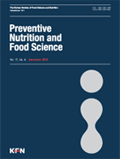
Preventive Nutrition and Food Science
Fostering Knowledge to Combat Contemporary Nutritional ChallengesPreventive Nutrition and Food Science, an esteemed journal published by the Korean Society of Food Science and Nutrition, serves as a pivotal platform for the dissemination of innovative research and insights in the fields of food science, nutrition, and dietetics. With an ISSN of 2287-1098 and an E-ISSN of 2287-8602, this journal is dedicated to advancing knowledge from 2012 through 2024, showcasing contributions that reflect the interplay between nutrition, health, and preventive strategies. Indexed in Scopus, it proudly holds a Q2 ranking in Food Science and a Q3 ranking in Nutrition and Dietetics as of 2023, positioning it among influential publications within these disciplines. Researchers, professionals, and students can explore cutting-edge studies that contribute significantly to evidence-based practices, enhancing public health and nutritional care. Although it operates under a subscription model, the journal plays a crucial role in fostering a deeper understanding of preventive nutrition, advocating for advancements that address contemporary dietary challenges.

FOOD SCIENCE AND BIOTECHNOLOGY
Exploring the Intersection of Science and Culinary ArtsFOOD SCIENCE AND BIOTECHNOLOGY, published by the Korean Society of Food Science & Technology (KOSFOST), stands as a prominent peer-reviewed journal dedicated to advancing knowledge in the fields of food science, biotechnology, and applied microbiology. With ISSN 1226-7708 and E-ISSN 2092-6456, this journal serves as a pivotal platform for disseminating high-impact research from South Korea and beyond, reflecting a robust Q2 ranking in multiple categories including Applied Microbiology and Biotechnology, Biotechnology, and Food Science as of 2023. The journal's influence is further emphasized by its positions in various Scopus ranks, where it showcases a commendable percentile ranking in Agricultural and Biological Sciences and Biochemistry. Although access options remain limited, the journal’s objectives revolve around the publication of innovative research, fostering interdisciplinary collaboration, and facilitating the exchange of ideas among a diverse community of researchers, professionals, and students. Whether you are involved in food technology, microbial biotechnology, or nutritional sciences, FOOD SCIENCE AND BIOTECHNOLOGY are instrumental in shaping the future of these critical fields, propelling advancements that enrich our understanding of food systems and health.